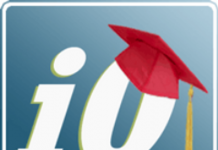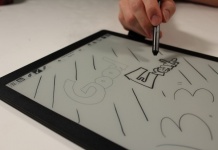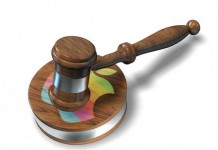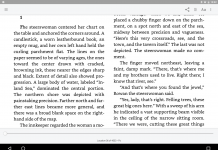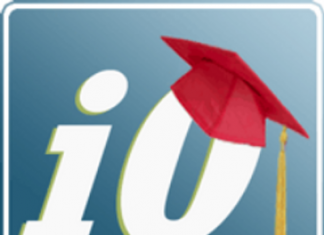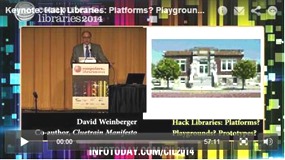 Less than 12 percent of U.S. public library spending goes for books and other items. Doubt the need for “hacking the library” through ingenious tech upgrades and reinvention of processes, missions and plenty else? I don’t.
Less than 12 percent of U.S. public library spending goes for books and other items. Doubt the need for “hacking the library” through ingenious tech upgrades and reinvention of processes, missions and plenty else? I don’t.
Nor do the organizers of the 29th Computers in Libraries conference named after the magazine.
Much to their credit, this Information Today event borrowed from the Harvard Library Innovation Lab and made “Hack the library” the theme at a gathering of well over 1,000 library professionals at the Washington Hilton.
A keynoter, the ever-stimulating David Weinberger, lab co-director, told them April 7: “Libraries are getting squeezed a bit, which means that we have the choice of either cutting our costs or increasing our value or do doing both. And hacking is a particularly good way of raising the value” through “fresh thinking” that may “increase the value of the system” in possibly “unexpected ways.” Agreed!
The same week of the conference, however, we also heard about the darker side of “hacking,” not just in the black-hat sense but also in the white-hat one, when news came out about the Heartbleed security risk. It has endangered thousands of computer servers throughout the world and along the way has jeopardized more than a few charge-card accounts and plenty else reliant on passwords. Black-hat perils are obvious. But why any risks from the white-hat side?
Dangers of aiming for too much more with too much less
Very possibly the good guys behind OpenSSL crypographic software were just a little too eager to do more with less, without taking quite enough time to garner the financial and professional resources to do the job right. The man responsible has commendably fessed up. No security sabotage here, just an honest mistake. With enough resources, more people could have been checking up on Robin Seggelmann‘s work.
Google and Yahoo and other Internet giants, of course, were equally culpable, in letting OpenSSL happen on the cheap. This isn’t to attack hackerish volunteerism and frugality or appreciation thereof—rather to highlight the perils of over-relying on them.
Does the above apply to U.S. public and academic libraries? Very much. The Digital Public Library of America, a Harvard-originated project on which Weinberger and other brilliant people have lavished thousands of hours of love while hoping to leverage the enthusiasm of volunteers, is a good start as a national academic library. But a hackerish approach and limited spending can take both the DPLA and the public library world only so far. Here are some factors to consider:
1. Most directly, the breadth and seriousness of Heartbleed should remind libraries that they are vulnerable in their own ways. This is the era of cyberwar. And in the future, America’s enemies may not just war against our electronic banking system or try to steal secrets from Silicon Valley. Ever intent on symbolism—no small reason for the selection of the twin towers of the iconic World Trade Center as a target in 2001—they may also sabotage even our cultural institutions, including libraries. Other countries should share similar concerns.
Think of the Buddhas the Taliban blew up in Afghanistan. Now, thanks to cyberwar, people of the same mindset could potentially wreak massive electronic havoc on the U.S. and other nations from afar. And don’t expect miracles from the current DPLA in regard to computer security. Its servers will house just so much content, and one wonders if the resources will be there for full protection of what is there.
Basically, as the DPLA exists now, despite hopes to improve it, the organization is simply an aggregator of content from elsewhere. Especially if we’re to have networked books and other content with secure links, a robust and hardened network of redundant archives is essential. While we need separate public and academic systems—to serve library patrons with widely varying needs—they should be intertwined in many ways and share this common infrastructure and much more.
Granted, the academic and hacker communities fear central authority, and I fervently agree. One solution could be to let the same content reside independently on the servers of libraries and museums and other institutions, so that no big brothers in Washington or elsewhere could make uppity items vanish. Another, of course, would be organizational governance of the kind that discourages gratuitous snooping on library users.
And how about “security” in another sense? Among other things, in terms of both technology and governance, national digital library systems also need to be able to deal with the data security complications that an open, highly interactive approach—my favorite by far—can create. That means enough resources for the job. Even the most brilliant white-hat hacking just isn’t enough by itself. Systems need to be able to minimize the traditional tradeoffs between openness and security. No small feat!
2. By diverting attention and what scarce resources do exist, the DPLA’s academic-tech-centered approach could unwittingly do damage in areas such as digital divide efforts. Spending money to help annotate the likes of Henry James isn’t quite the same as coming up with better, cheaper ways for library patrons to use WiFi or read e-books. Annotation for public library patrons, too? Essential. But let’s not risk downplaying such basics as access and the original content, including the commercial variety. The public domain books dear to the DPLA and me are minor sideshows for the overwhelming majority of public library patrons. Do we really want to risk gentrifying our public libraries in time as the virtual grows in importance?
3. Genuine hacking arises out of curiosity and passion, two traits that serve the academic world well. But public libraries are different. They mainly accommodate the masses, not the campus elites. Yes, good public librarians can and should work with passion. But patron needs should come ahead of everything else, including librarians’ own personal interests, in line with the Five Laws of Library Science.
As I see it, then, we mustn’t let networked makerspaces and other DPLA-style goodness displace such basics as family literacy programs (ideally modernized for the Web era). Even some academic needs can suffer if an excessively hackerish mindset prevails, as shown by the DPLA’s inability so far to come up with a good flexible creation tool of the kind described earlier on the LibraryCity site.
A DPLA-friendly twin-system vision
Like the director of the Colorado Library Consortium—check out Jim Duncan’s recent LibraryCity series offering his personal views—I don’t see the DPLA as sufficiently responsive to mainstream public library needs. We’re both pro-DPLA. Jim and I simply want a separate public library system joined at the hip with an academic system. Our thoughts jibe with those of most of the commenters so far in an ALA discussion on LinkedIn on the different missions of public and academic libraries.
One compromise possibility might be for Harvard’s Berkman Center for Internet and Society, which helped give birth to the DPLA, to host an embryonic National Digital Library of America. The NDLA would be the digital public system, while a reinvented DPLA served as the academic one.
With sharper focuses, the two groups could more successfully draw funding from the super rich and major foundations and together work toward a national digital library endowment to help them both be sustainable. A Baltimore Sun article on the evolving endowment proposal is here. To show good faith, the DPLA could drop the “Public” from its name as soon as possible and instead call itself something like the Digital Academic Library of America. This would help it get in the good graces of the Chief Officers of State Library Agencies, which wisely objected to the P word as a threat to the branding of genuine public libraries. COSLA members, in turn, maybe working with people from the Public Library Association and other groups, could create the NDLA. With this bi-system architecture, philanthropists and their foundations would very likely be more receptive than they are now to current DPLA. The endowment and the two systems could start as nonprofits to encourage maximum experimentation with minimum bureaucracy, then evolve into service-oriented government agencies for maximum transparency and responsiveness (despite all the talk of openness, the DPLA held its first meetings in secret until public librarians and others spoke up).
Ideally technology contractors would also see opportunities here; and, in time, so might commercial publishers whose offerings are the mainstays of public library collections.
At the moment we’re spending only around $4 per capita on public library content, according to fiscal year 2011 numbers from the Institute of Museum and Library Services. Total content spending? Only about $1.2 billion a year. A hackerish approach by itself isn’t enough to turn things around.
Where the money is
Now, consider that just 400 people in the U.S. are together worth some $2 trillion, according to Forbes. Just a crumb of a crumb of that could make a major difference to libraries and their patrons—helping to meet needs ranging from Web-era family literacy to e-books and related training and devices for the elderly. A U.K. study has shown a close relationship between academic success and even recreational reading, and the endowment could help pay not just for content but also for the hiring and professional development of library professionals to help patrons find and absorb it. In other words, both the money and ample justifications for spending it exist. If the super rich want to upgrade U.S. workforce—not all jobs can be contracted abroad—this would be a very cost-effective way to do it.
Speaking to Computers in Libraries, David Weinberger smartly called for “less anticipation and more possibility”; even a Swiss Army knife designer, he more or less said, cannot give us every blade we’ll eventually need. The same can be said of the DPLA, however wondrous its platform of technology and content. Some possibilities just can’t happen without sufficient money and without a public library approach, too, rather than just a hackerish or academic one.
Update, 4 p.m. April 11: Via e-mail, a veteran librarian in New York tells me he wonders how much the DPLA is listening to special libraries, such as those in tax-funded museums and associations. Here’s my take. The DPLA has laudably cared about making their collections visible, including nonlibrary parts of museums of all kinds. In fact, a Smithsonian rep has participated extensively in the DPLA. Hats off to the DPLA in this respect!
Less positively, large institutions in all categories have enjoyed more than their share of influence at the expense of small-town and rural libraries, as well as the K-12 variety. And now a related question arises. In what system should an institution hold a membership? I myself would suggest flexibility, especially since the natures of institutions like museums can vary.
Perhaps a museum, association or another nonlibrary institution could hold a full membership in the public or academic library system and associate membership in the other. And as for actual collection items, they should be universally and easily accessible to the maximum extent possible through the common infrastructure and through metadata standards and in other ways. All kinds of good things could be possible through APIs and other wonders in the true spirit of Weinberger’s “hacking” speech. I’m even gung-ho on a universal, multi-system catalog for patrons preferring to use one. I simply don’t want the needs of universities and large urban libraries and big, Smithsonian-style museums coming ahead of those of others’, as is clearly the case now. Hence the need for public and academic systems with different main mission missions. The exchange of knowledge for upper-level research purposes is a far, far cry from purveyance of bestsellers or of books useful for English-language learners or participants in family literacy programs.
The above CC-licensed post appeared originally on the LibraryCity.org site.



